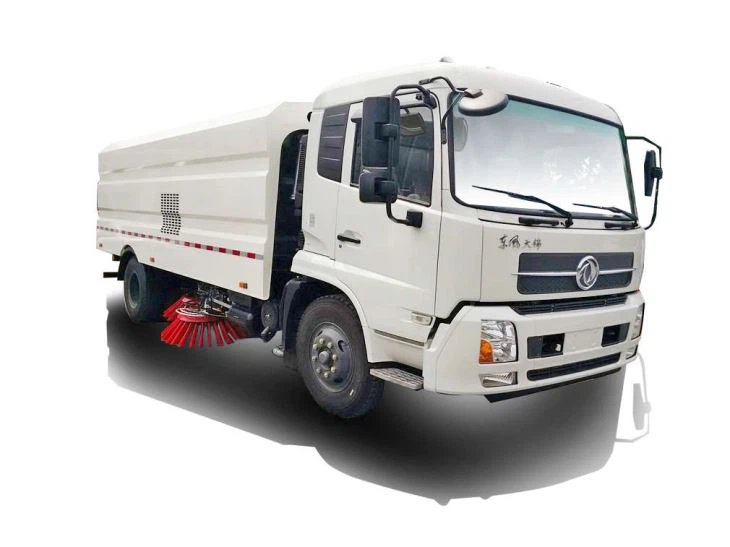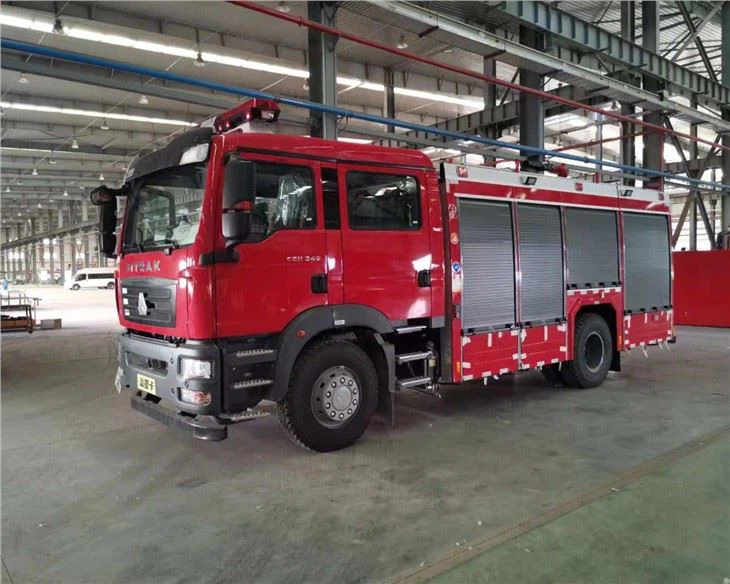Understanding Fuel Tank Trucks: Essential Insights and Best Practices

Introduction
The fuel tank truck, also known as a fuel delivery truck, plays a crucial role in transporting various types of fuels, including gasoline, diesel, and biodiesel. These specialized vehicles are designed to deliver fuel safely and efficiently to service stations, construction sites, and agricultural operations. With increasing demand for fuel transportation, it is vital to understand the features, regulations, maintenance, and best practices associated with fuel tank trucks. This article will serve as a comprehensive guide to fuel tank trucks, ensuring both operators and interested parties are well-informed.
What is a Fuel Tank Truck?
A fuel tank truck is a specially designed vehicle equipped to safely transport liquid fuels. These trucks have a tank that is segmented to handle different types of fuel, often featuring advanced safety and regulatory compliance measures. Here’s a closer look at the main components and their functions.
Main Components of Fuel Tank Trucks
- Tank: The primary container for fuel; sizes vary based on the type of truck.
- Pump: Used for loading and unloading fuel, ensuring efficient transfer.
- Hoses and Nozzles: Essential for dispensing fuel safely; typically made of durable materials to prevent leaks.
- Safety Equipment: Includes fire extinguishers, spill kits, and emergency shut-off valves.
Types of Fuel Tank Trucks
Fuel tank trucks come in various configurations to cater to different needs:
- Single-compartment Tank Trucks: Ideal for transporting one type of fuel.
- Multi-compartment Tank Trucks: Can transport multiple types of fuel without cross-contamination.
- Vacuum Tank Trucks: Used for suction services, such as removing oil and waste from tanks.
Regulations Governing Fuel Tank Trucks
Fuel tank trucks must comply with a range of regulations designed to ensure safety and environmental protection. Understanding these regulations is essential for any operator or business involved in fuel transportation.
Key Regulatory Bodies
- Department of Transportation (DOT): Regulates the transportation of hazardous materials, including fuel.
- Environmental Protection Agency (EPA): Sets standards to prevent soil and water contamination from petrol and diesel spills.
- Occupational Safety and Health Administration (OSHA): Ensures safety practices are in place for workers handling fuels.
Important Regulations to Consider

| Regulation | Description |
|---|---|
| Hazmat Certification | All drivers must obtain a Hazmat endorsement to transport fuel. |
| Insurance Requirements | Operators must carry specific insurance coverage for fuel transportation. |
| Spill Response Plan | Companies must have proactive spill response plans and training for employees. |
Safety Protocols for Fuel Tank Truck Operation
Safety is paramount when operating fuel tank trucks. There are several protocols that drivers and operators should implement.
Pre-Operation Safety Checks
Before hitting the road, operators must conduct thorough safety checks, including:
- Inspecting hoses and nozzles for wear and leaks.
- Ensuring the tank is properly sealed and secured.
- Checking that all safety equipment is accessible and functional.
Loading and Unloading Procedures
Loading and unloading fuel must be done carefully. Follow these guidelines:
- Always ground the truck to prevent static electricity.
- Use explosion-proof equipment when possible.
- Monitor gauges and indicators closely during the process.
Emergency Measures
Despite best efforts, emergencies can occur. Be prepared by:
- Training staff on how to respond to spills and leaks.
- Having a clear evacuation plan established.
- Regularly inspecting and replenishing first-aid kits and fire extinguishers.
Maintenance of Fuel Tank Trucks
Regular maintenance is vital for the safety and efficiency of fuel tank trucks.
Routine Maintenance Schedule
Establishing a routine maintenance plan can significantly extend the lifespan of your vehicle:
- Weekly Checks: Inspect hoses, steps, and gauges.
- Monthly Checks: Review pump functionality and tank integrity.
- Annual Inspections: Comprehensive inspection by a certified technician.
Common Maintenance Issues
Operators should be aware of common issues that can arise. These include:
- Leaks or corrosion in the tank or hoses.
- Pump failure due to poor maintenance.
- Defective valves leading to spills or pressure loss.
Choosing the Right Fuel Tank Truck for Your Needs
Selecting the right fuel tank truck involves several considerations, including capacity, type of fuel transported, and compliance with regulations.
Factors to Consider
- Capacity: Determine how much fuel you will need to transport regularly.
- Fuel Type: Ensure the truck can handle the specific types of fuel you require.
- Compliance: Choose a model that meets all local and state regulations.
Practical Examples
Here are a couple of scenarios to illustrate how to choose the right truck:
- If a construction company requires frequent diesel deliveries, a multi-compartment tank truck with a large capacity will be ideal.
- A local gas station may benefit from a single-compartment tank truck optimized for gasoline delivery.
Fuel Efficiency and Environmental Considerations
With rising fuel costs and a growing concern for the environment, understanding fuel efficiency and environmental impact is critical.

Improving Fuel Efficiency
- Regular maintenance can improve fuel efficiency.
- Driving at optimal speeds and avoiding rapid acceleration helps save fuel.
- Using fuel additives can also enhance performance.
Reducing Environmental Impact
To minimize the environmental footprint:
- Invest in modern, eco-friendly fuel tank trucks with lower emissions.
- Implement spill prevention practices during loading and unloading operations.
- Encourage recycling of materials used in fuel storage and delivery.
Case Studies: Successful Fuel Tank Truck Operations
Examining successful fuel tank truck operations can provide valuable insights and inspiration for others in the industry.
Case Study 1: Construction Company
A large construction company in Texas operates a fleet of multi-compartment fuel tank trucks, allowing them to deliver both gasoline and diesel. They conducted regular training for their drivers and maintenance staff, resulting in a 15% reduction in fuel costs over two years.
Case Study 2: Local Gas Station
A family-owned gas station implemented a modern single-compartment fuel tank truck that met all environmental regulations. By using fuel-efficient driving practices and regular maintenance, they managed to decrease their carbon footprint while maximizing delivery efficiency.
Frequently Asked Questions (FAQ)
What is the typical capacity of a fuel tank truck?
Fuel tank trucks typically have capacities ranging from 1,000 to 10,000 gallons, depending on their design and intended use.
Do I need special training to operate a fuel tank truck?

Yes, operators must complete specialized training, including obtaining a Hazmat endorsement and understanding safety protocols.
How often should a fuel tank truck be maintained?
A routine maintenance schedule should include weekly checks, monthly inspections, and comprehensive annual inspections by certified technicians.
What safety equipment is necessary in a fuel tank truck?
Essential safety equipment includes fire extinguishers, spill kits, emergency shut-off valves, and personal protective gear for staff.
Are there environmental regulations for fuel tank trucks?
Yes, operators must comply with local, state, and federal regulations regarding the transportation of hazardous materials and spill prevention measures.
What should I do if a spill occurs during operation?
Follow the established spill response plan, including alerting emergency services, containing the spill if safe to do so, and using spill kits to mitigate environmental damage.
